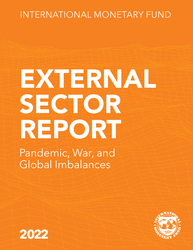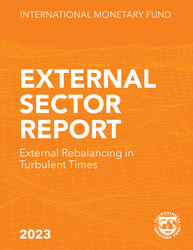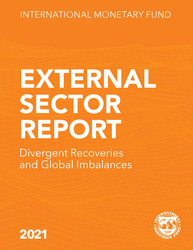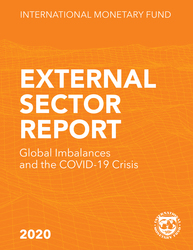
External Sector Report, 2022:Pandemic, War and Global Imbalances
Pandemic, War, and Global Imbalances
READ MORE...
Publication date: August 2022
ISBN: 9798400214943
$50.00
Add to Cart by clicking price of the language and format you'd like to purchase
Available Languages and Formats
| English |
Topics covered in this book
This title contains information about the following subjects.
Click on a subject if you would like to see other titles with the same subjects.
Exports and Imports , Economics- Macroeconomics , Taxation - General , International - Economics , Environmental Conservation and Protection , current account response , IMF staff calculation , CA gap , CA surplus , saving-investment relationship , Current account , Carbon tax , Real effective exchange rates , Current account balance , Global , Europe , Africa
Summary
Global current account balances—the overall size of current account deficits and surpluses—continued to widen in 2021 to 3.5 percent of world GDP, and are expected to widen again this year. The IMF’s multilateral approach suggests that global excess balances narrowed to 0.9 percent of world GDP in 2021 compared with 1.2 percent of world GDP in 2020. The pandemic has continued to affect economies’ current account balances unevenly through the travel and transportation sectors as well as a shift from services to goods consumption. Commodity prices recovered from the COVID-19 shock and started rising in 2021 with opposite effects on the external position of exporters and importers, a trend that the war in Ukraine is exacerbating in 2022. The medium-term outlook for global current account balances is a gradual narrowing as the impact of the pandemic fades away, commodity prices normalize, and fiscal consolidation in current account deficit economies progresses. However, this outlook is highly uncertain and subject to several risks. Policies to promote external rebalancing differ with positions and needs of individual economies.
Copyright © 2010 - 2025
Powered by:
AIDC



